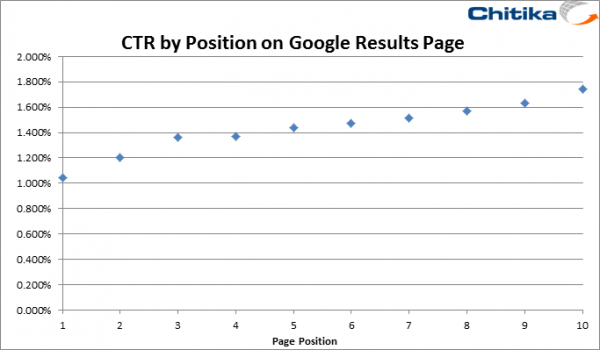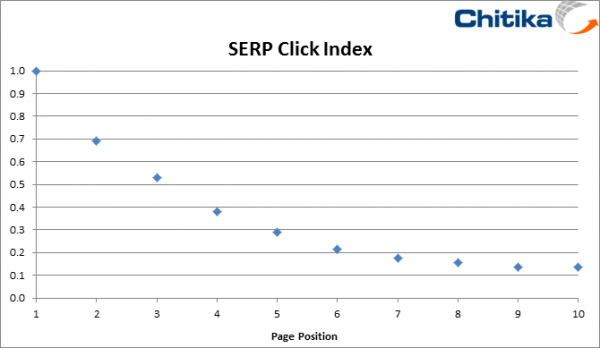Google Results Position: How Much Is First Place Really Worth?
Google page position has long been considered one of the holy grails for site owners, advertisers, or marketers running campaigns to increase the level of exposure for their site. If you’re reading this, you probably know that search engine optimization (SEO) is one of the main methods marketers can utilize in the everlasting quest for […]
Google page position has long been considered one of the holy grails for site owners, advertisers, or marketers running campaigns to increase the level of exposure for their site. If you’re reading this, you probably know that search engine optimization (SEO) is one of the main methods marketers can utilize in the everlasting quest for an improved page position. Successful SEO campaigns are executed by focusing on a variety of variables such as content development, site keywords, review of site structure and content.
While it is still possible for a site to rank first on a page, Google search engine results pages (SERPs) often includes paid advertisements (identified by the heading “Ads related to”) which appear in the most valuable real estate on the page, listed above all organic search results. Nonetheless, capturing the first organic spot still holds large value to advertisers and publishers – but how much? How different is the value provided by the third spot as opposed to the first?
Recent data reported by online advertising network Chitika provides deeper insight into the relationship between search engine page position, user engagement, and the corresponding level of traffic driven to these sites.
Regardless of the presence of paid advertisements on the SERP, the top organic result captures the largest share of impressions on Google’s first page of results, with the second result capturing significantly less, and so on. This relationship is highlighted below:
As can be seen above, the share of impressions coming from the first position is almost double that from the second position, truly illustrating the value the first spot holds. But what happens after the users navigate to a website from the SERP page? Is their click-through-rate on the page they visit influenced by where that page appeared on the SERP?
Instinctively, one would assume users navigating to the first result on Google’s SERP would experience the highest click through rates (CTR) on that next page, due to high visibility and the user’s perceived value of the first search result. However, this turns out to not be the case. The following graph illustrates the inverse relationship between the first ten search results and their corresponding CTRs:
This data shows that in terms of CTR alone, the tenth result on Google’s SERP outperforms the first organic link by more than 66%. It is important to take this information with a grain of salt, despite its higher CTR, the volume seen by the tenth result on Google’s SERP is only 8% of the first result.
Given this, although the tenth position may outperform the first on a case-by-case basis, in terms of absolute engagement the first result still stands as the best bet for a marketer seeking exposure to a wide audience.
So as you can see, the value derived is both a function of the volume expected from a particular position on the Google SERP, as well as the CTR of that same position. Enter the SERP Click Index, which we developed at Chitika. The SERP Click Index highlights the relationship between the distribution of traffic for a certain SERP position and the value or level of engagement (CTR) derived from it.
By integrating the SERP Click Index into the campaign planning process, marketers can enhance their ability to assess the value of potential partner sites with which to do business or run campaigns on. This means that in this example, the third position, which has an index of .53, generates 53% the volume of clicks as the first position. This index can be used to directly compare the value of different positions on the Google SERP.
Marketers can use this information to assess the quality of websites on which they wish to run campaigns. How much more valuable is a site regularly appearing in Google’s first spot for your keywords compared to one appearing in Google’s third spot? Perhaps this technique can help to quantify these differences and allow marketers to optimize their ad spend.
Opinions expressed in this article are those of the guest author and not necessarily MarTech. Staff authors are listed here.
Related stories


